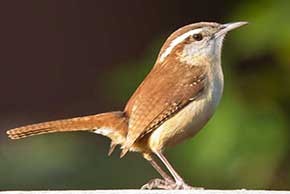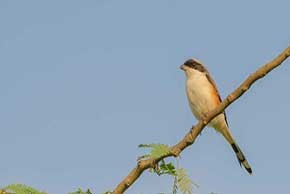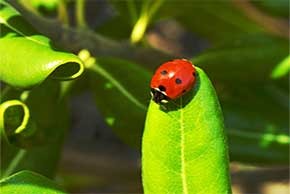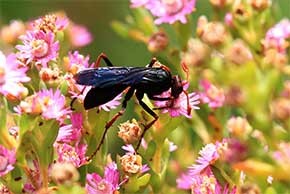Severity: Notice
Message: Only variable references should be returned by reference
Filename: core/Common.php
Line Number: 257
Severity: Notice
Message: Accessing static property DataMapper::$config as non static
Filename: libraries/datamapper.php
Line Number: 6503
Severity: Warning
Message: session_start(): Cannot start session when headers already sent
Filename: libraries/Session.php
Line Number: 137
Severity: Notice
Message: Accessing static property Users_model::$config as non static
Filename: libraries/datamapper.php
Line Number: 6503
Severity: Notice
Message: Accessing static property Content_types_model::$config as non static
Filename: libraries/datamapper.php
Line Number: 6503
A wildlife garden or a wild garden is usually a man-made environment that attracts various forms of wildlife such as birds, amphibians, reptiles, insects, mammals and so on. A wildlife garden will usually contain a variety of habitats that have either been deliberately created by the gardener, or allowed to self-establish by minimizing maintenance and intervention. Many nature lovers take up this type of gardening to increase the activity of wild-life in their gardens. Imagine the wild life attracted to your patch as a heavenly abode. Many out there are organic gardeners, sympathetic to the philosophy of wildlife gardening and will usually try to incorporate some aspects of the wild garden into their own plots in order to both act as a means of biological pest control, as well as for its value in promoting biodiversity and generally benefitting the wider environment. Here are some tips to increase the traffic of wild life visiting your gardens:
If you avoid the use of pesticides in the garden, you will immediately increase the numbers of insects visiting. This in turn will encourage insect-eating birds including robins, wrens, blue tits and thrushes, mammals as well as increase numbers of bees, butterflies and all manner of beneficial insects
Choose carefully from a reliable list of good nectar plants using information from a wildlife gardening book
If you have room for a native tree, such as a silver birch , so much the better, but if not try something like an ornamental crab apple even a bushy rose climber or the popular wild rose "Thorni in Khowar" is perfect for nesting. A native hedge in the garden, composed of a good mixture of berry bearing, spiky shrubs such as hawthorn and blackthorn, together with dogwood, guelder rose, hazel, spindle are perfect… the list goes on and on.
You will be amazed at how birds will come to the garden if there is a tree to provide them with perching nesting and roosting places, shelter, and food in the form of seeds and fruit. Then putting out some feed for your garden birds all year round is a brilliant way of encouraging more species to your garden and helping them in a wider sense. Wood is plenty in Chitral you can design and put up a nest boxes in different corners and do more than the Wild life department :)
The Cherry tree is a generous host to some of the most unique birds around the world. Here in Chitral, it attracts the Golden Oriole, a small bird with strikingly beautiful yellowish-golden colored feathers. It is omnivorous in nature. Its main diet includes Cherries and Pomegranates as well as insects. In fact the structure of its beak is perfect for hunting insects hidden in logs and underground. we believe it to be another addition to all our garden lover’s pest problems. The Golden Oriole is referred to in many songs in Chitral. The most popular one being “Mayon aye mo Chuley ki” - by Mirza Ali Jan.

Chitral is blessed with various species of native as well as migratory birds throughout the year. One such blessing is the Robin. It is one of the more recognizable birds in the northern region. Robins help plants spread by pooping out seeds after they have eaten fruits. The seeds can then grow in new places. It has gray-back wings with a red breast. This bird usually migrates (flies South) for the winter and can be found in Chitral from February till September. Flowering Dogwood, Black Cherry and Wild Grape are some of the many plants that the Robins are attracted to

Wrens are primarily insect eaters, but they will also eat some fruits and seeds. You can increase your chances of attracting Wrens to your garden if you put a bird feeder and a brush pile close to your feeding area. They feel more secure with a place to seek refuge nearby. They are amazing singers, cute, fun to watch, full of character. They adapt to all sorts of habitats. They may nest in a log pile or even a conifer hedge in your garden and search it diligently for small insects, especially spiders.

The black-capped chickade lives in deciduous and mixed forests. with diet consisting of seeds, berries and insects(specially caterpillars) it feels at home where it can find plenty of insects, or even a feeder pot. It is well known for its capacity to lower its body temperature during cold winter nights as well as its good spatial memory to relocate the caches where it stores food, and its boldness near humans (sometimes feeding from the hand). It is almost universally considered 'cute' due to its oversized round head, tiny body, and apparent curiosity about everything, including humans. a common visitor in the Chitral gardens, this bird is without a doubt a heart-melter.
-290x195.jpg)
The Bay-backed shrike is a meat-eater, found mainly in scrubs and open habitats. This bird has a characteristic upright "shrike" attitude when perched on a bush, from which it glides down at an angle to take lizards, large insects, small birds and rodents. Known in Chitral by the name of “Tiouf”, it is capable of flawless vocal mimicry and its songs include the calls of many species including lapwings, cuckoos, puppies and squirrels. This singing ability makes it a very popular pet throughout Chitral and almost all of Southeast Asia and an eagerly awaited guest in the gardens of many.

Every garden would have the Ladybug or ladybird as most of us call it. It is a beneficial insect for our plantation and is not plant/flower specific, which means an abundance in their numbers. Almost the size of a paper clip and having more than 5000 species worldwide, we are lucky that the ones found in Pakistan have an appetite for other insects as compared to some of its relatives that prey not on plant-eaters but on plants. Having bright colors and a shy nature, the ladybug is a pleasant site in most gardens.

The perfect gift a garden lover would appreciate above all is the Butterfly, which is truly a sight for sore eyes. With their wings decorated with various patterns and amazing color combinations. However, some species of butterflies are considered to be pests because in their larval stages they can damage domestic crops or trees; however, some species are important agents of pollination of some plants and caterpillars of a few butterflies (e.g., Harvesters) eat harmful insects. Culturally, butterflies are a popular motif in the visual and literary arts of Chitral.

Another beneficial member of the insect family for our gardens is the Parasitoid Wasp. Again it is neither plant specific nor flower/seed specific. Wherever it finds food (the insects each wasp kind is attuned to eating) it will make a home there. Known to kill other insects in order to lay their eggs, this wasp helps us get rid of many different pest related issues. Even though these wasps seem threatening, but unless they are disturbed or endangered, they wouldn’t sting humans. Sometimes, their colors can be really beautiful to behold.

No results found